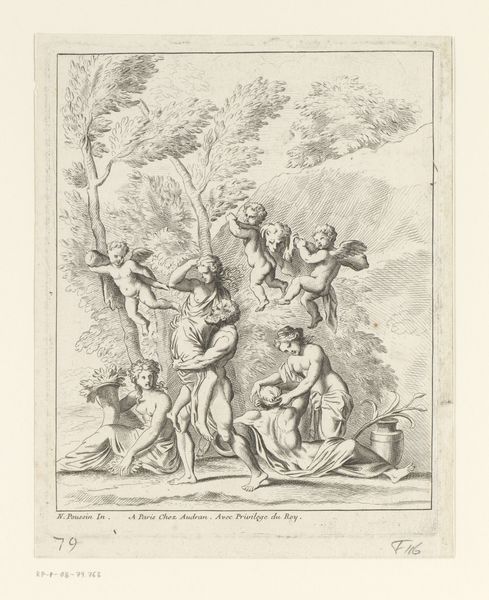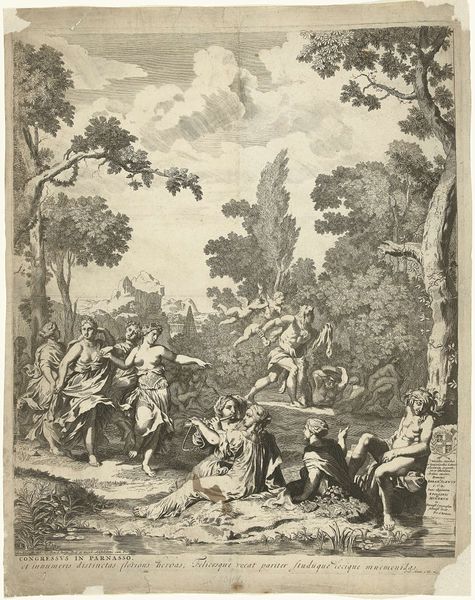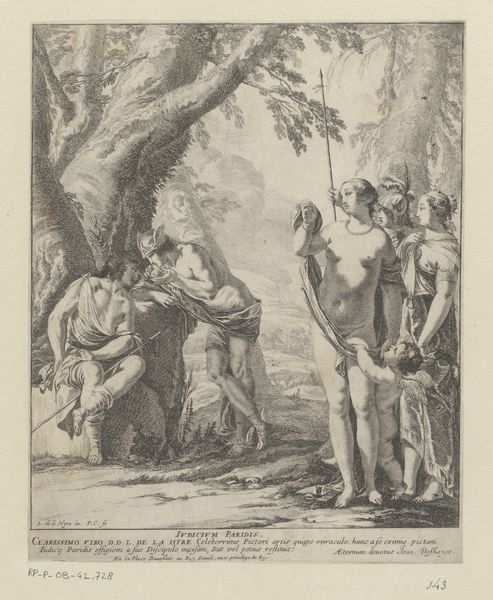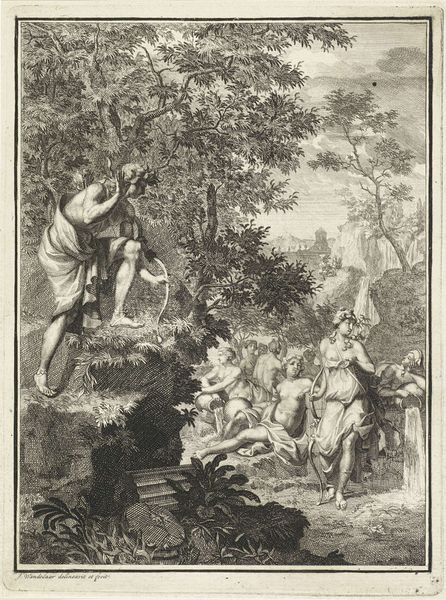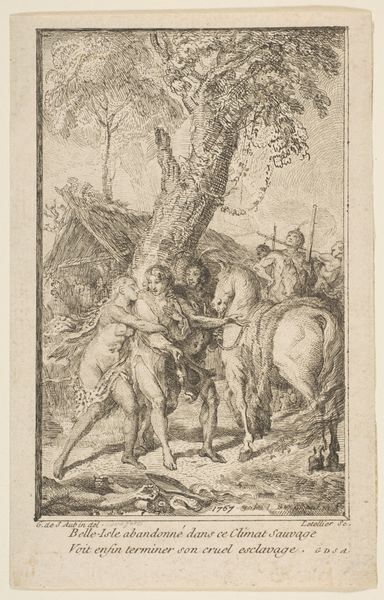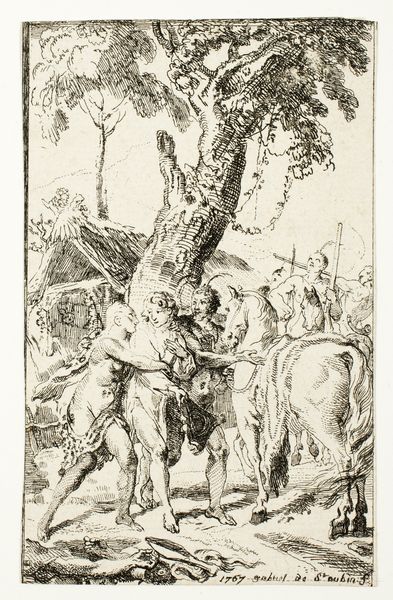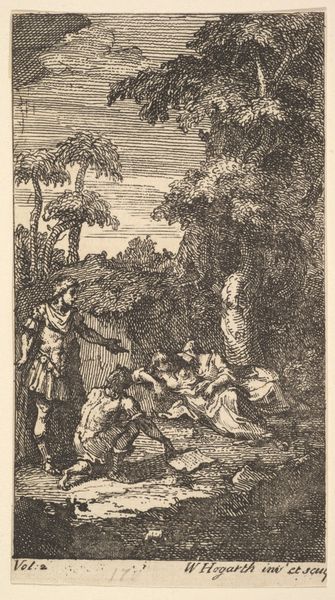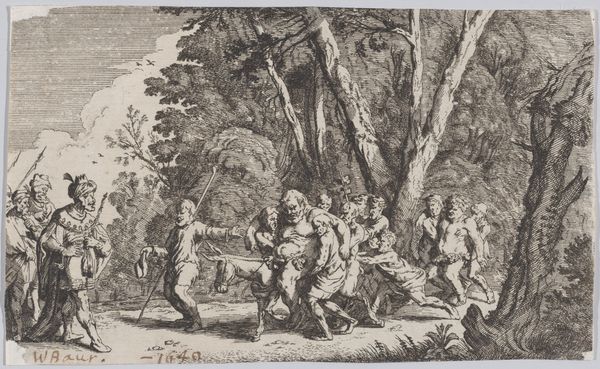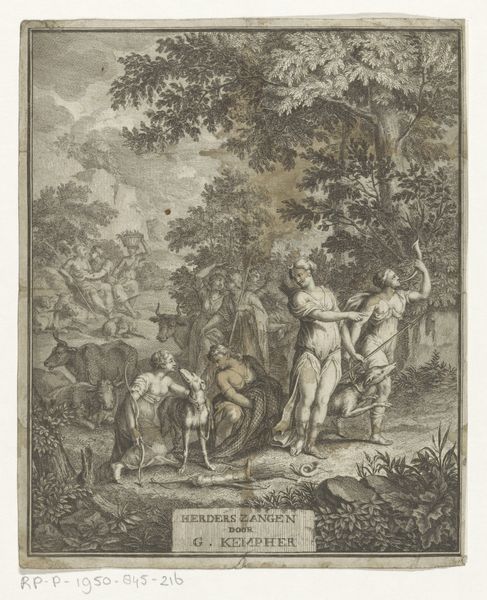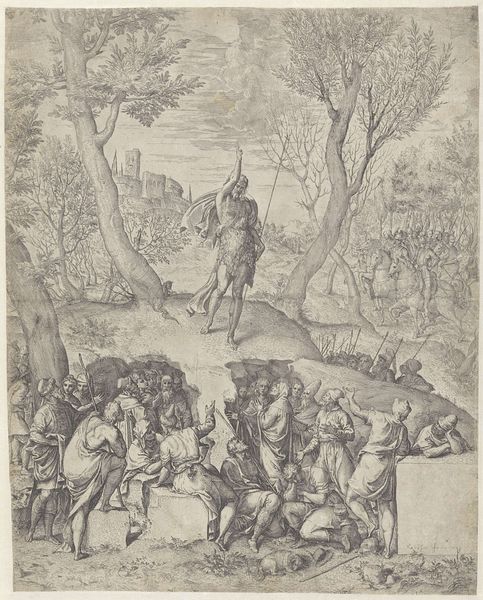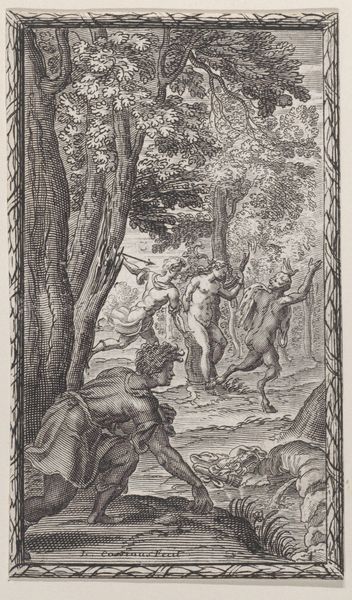
Heroic Act of a Father Who Sacrifices for His Son (Trait heroique d'un pere qui se sacrifie pour son fils) 1767
0:00
0:00
Copyright: National Gallery of Art: CC0 1.0
Editor: Here we have Gabriel de Saint-Aubin’s 1767 ink drawing, “Heroic Act of a Father Who Sacrifices for His Son." The linework is incredible; it creates such a dramatic scene, all these figures crammed together beneath a rather imposing tree. It's intense! What's your take? Curator: Intense is the perfect word. I see this as Saint-Aubin wrestling with some pretty big ideas, the heady brew of Neoclassicism and the Baroque clinging to life. That raw, almost theatrical drama shouts Baroque, doesn't it? But there's also this striving for virtue, this idea of self-sacrifice pulled straight from the antique world. The question that jumps out to me is: what makes a hero in this context? Is it nobility or the melodrama of it all? Editor: So it's like, is he questioning whether this 'heroism' is performative? Curator: Exactly! The almost frantic energy of the lines contrasts beautifully with the calm, almost idealized figures. Think about the light and shadow, the way he guides our eyes... Does that direction seem like happenstance, or part of a deliberate strategy? Editor: It feels deliberate; the father is illuminated as this sort of martyr figure. But the crowd... the historical figures... it adds this extra layer, I guess. Curator: Indeed. A society watches on and it demands reflection! Does the "hero" do this deed alone? Or with a crowd encouraging or watching on... Where do YOU see the 'Heroic Act' here? And might there be something more, beyond heroism, in this sacrifice? Editor: I never thought about it that way, about how performative these acts can be... I will need to give that some further thought! Curator: I, too, found more food for thought examining what I *thought* I knew. Perhaps its greatest success will be its provocation to us.
Comments
No comments
Be the first to comment and join the conversation on the ultimate creative platform.


